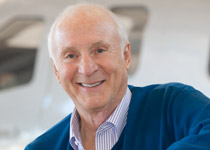Proficient Pilot: A bygone era
It sure was fun, back in the day
 When I started with TWA in 1964, the 250-knot speed limit below 10,000 feet did not exist. We could take off in a Boeing 707, retract the gear and flaps, push the nose down to the horizon, and accelerate to the barber pole (redline).
When I started with TWA in 1964, the 250-knot speed limit below 10,000 feet did not exist. We could take off in a Boeing 707, retract the gear and flaps, push the nose down to the horizon, and accelerate to the barber pole (redline).
Was this dangerous? Given the increasing population of light airplanes and other creatures milling about in the lower altitudes, I concede that it was. This is why the 250-knot limit eventually had to be imposed. But it sure was fun. Nor did we care about the cost of the extra fuel this consumed. At 20 cents per gallon, “kerosene” was cheap, seldom a consideration except during long-range operations. (Bonded fuel for international flights cost only a dime a gallon.)
My first low-altitude experience in a Boeing 707 occurred when I was co-pilot during a ferry flight from Los Angeles to San Francisco. Shortly after takeoff, Capt. Perry Schreffler asked me to cancel IFR and advise Departure Control that we would proceed VFR. He wasn’t kidding. He had told his buddies at 40-mile-distant Santa Paula Airport that he would be “dropping by” that afternoon during a flight up the coast. None of them had any idea what Schreffler had in mind. Try to imagine, though, the unexpected sight and deafening roar of a humongous Boeing 707 passing over the short runway of a pastoral, nontowered general aviation airport at a “bit less” than 1,000 feet agl. It was an experience never forgotten by those who were there.
We did all sorts of things in those days that would land us in Leavenworth these days, such as inviting passengers into the cockpit. This happened with regularity. The most memorable such experience for me was when I was a Boeing 727 captain and invited actor John Wayne to occupy the jump seat between Amarillo and Wichita. What was he like? Bigger than life, an extraordinarily proud patriot, and every bit the way he appeared on screen. But you didn’t have to be a celebrity to visit the flight deck. In those days we had the unofficial discretion to invite anyone.
Equally enjoyable was walking through the cabin to chat with passengers and answer questions, the most common ones being, “Who’s flying the airplane?” and “Where are we?” It’s probably just as well that post-9/11 regulations ban airline pilots from such “cabin tours.” Some don’t know their geographic position as well as do passengers with their own moving-map displays. Savvy passengers using Wi-Fi often know more about distant en route weather, too. They can observe Nexrad weather displays, while most airlines do not allow their pilots to use Wi-Fi on the flight deck. (iPads serving as electronic flight bags are used to access stored data.)
Pilots used to be required to be more intimate with their airplanes than are today’s pilots, but this did not necessarily make them better pilots. I mean, who cares how AC electrical power finds its way between one circuit-breaker panel and another? But we had to know this and many other arcane details. One of our senior captains finally had enough. During the oral examination for a 707 type rating, he was asked by an FAA examiner to cite the exact wingspan of the international variant.
“Why would I [care] about that? I’m not building a box for it,” the captain snorted in rebellion.
He got away without having to answer.
The good old days really were, at least in the sense that we were allowed greater flexibility and liberty. For example, there are quiet and occasionally boring periods during transoceanic flights. At such times and especially during red-eye flights between Hawaii and the mainland, I often took out my nose flute and played The High and the Mighty into an open microphone and over the VHF frequency guarded by all other oceanic flights (but well beyond FAA and FCC listening range). I have been told that my broadcasting of this haunting melody developed a significant reputation over the years. Most of the younger pilots who heard it, of course, didn’t have a clue, so the elders had to explain. It also attracted lots of replies such as “Hi, Duke,” “Don’t hit your captain,” and other such references to the classic 1954 film. It was comforting to hear from others out there plying the night skies. Then the frequency would again fall silent and the dark sky was again a lonely place to be.
Perhaps some of you can remember having been dropped off curbside at some international airport and then racing to your gate and onto your flight in five minutes (or less). There were no metal detectors or security procedures, just smiling faces watching you run by and expressing hope that you made your flight.
Such times and such freedoms are forever gone.
Web: www.barryschiff.com


